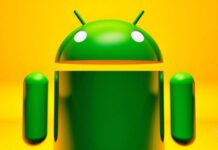Saurik, omul din spatele business-ului numit Cydia, a trimis la Oficiul pentru Copyright din SUA o petitie prin care sustine legalizarea jailbreak-ului si explica de ce acest lucru este necesar. Documentul trimis de el are 6 pagini si in ele se explica in detaliu la ce ajuta jailbreak-ul intr-o piata in care Android-ul este un sistem Open Source. Puteti citi totul aici insa interesant este modul in care saurik foloseste sistemul de operare Android si a sa “deschidere” pentru a sustine cauza legalizarii jailbreak-ului pe iDevice-uri. Strategia lui saurik este interesanta mai ales ca majoritatea celor care folosesc un iDevice nu sunt chiar atat de dispusi sa cumpere un terminal Android dar important pentru “parintele Cydia” este salvarea business-ului prin orice mijloace.
The majority player currently is clearly Android, with 52.5% of the marketplace. Android is an interesting platform, as it is often touted as “open–source”, a designation that would indicate that it is not just slightly open, but very open. However, the operating system being open really only allows manufacturers to make devices that use it. Existing devices purchased by a user might not be able to have any modifications from the consumer.
Googleʼs Android, though, provides a large amount of leeway to the device manufacturer. The model used is that a manufacturer, such as HTC or Motorola, produces devices. They then install Android on these devices. This manufacturer has the option of making the device itself open or closed, allowing all of the software to be pulled and replaced if desired. However, most device manufacturers have chosen a closed device. While a few, such as Google themselves, offer devices that are open, the market is dominated by ones that are closed.
In the few cases where the device is open, the same warranty voiding occurs as when the device is unofficially jailbroken or rooted. This means that while the device is theoretically capable of being modified, it is clearly not the manufacturer’s intent to allow it, and they use strong wording to discourage the user from doing it during the process (see: “fastboot oem unlock”). Without voiding the warranty, all of the restrictions mentioned in the previous sections apply. Android does, however, often (and this is again subject to manufacturer interest) offer an additional level of openness: applications (though, with the aforementioned restrictions) can often be installed without having to go through the official marketplace.
Of the remaining vendors—Symbian, iOS, BlackBerry, Bada (Samsung), and Microsoft—all require a cryptographic signing process that they directly control in order to distribute software for their respective devices. Even after having gone through that process, applications for iOS, BlackBerry, and Microsoft devices possess all of the restrictions described in the previous sections. What this means, is that when a consumer goes to the store, the options are often not present to purchase an open device. Even consumers that believe strongly in open devices, and are willing to go directly to the producers of them, have to make very difficult tradeoffs in functionality. As the closed devices are being designed and manufactured by the larger companies, the higher-quality devices are often the ones that end up being the most closed.
Sadly, given the incentives present for being the sole distributor of software, this is a situation that is both expected and stable. By controlling the marketplace of software, these manufacturers get to decide the when, how, and who behind new features that roll out to their devices. In the example of video recording, Apple used the iPhone 3GS’s video recording capabilities as one of its primary marketing messages. This would not have been possible had they admitted software that allowed the original iPhone to record video into their App Store

















